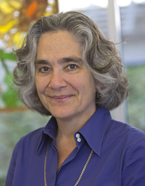
Handy Links
SLAC News Center
SLAC Today
- Subscribe
- Archives: Feb 2006-May 20, 2011
- Archives: May 23, 2011 and later
- Submit Feedback or Story Ideas
- About SLAC Today
SLAC News
Lab News
- Interactions
- Lightsources.org
- ILC NewsLine
- Int'l Science Grid This Week
- Fermilab Today
- Berkeley Lab News
- @brookhaven TODAY
- DOE Pulse
- CERN Courier
- DESY inForm
- US / LHC
SLAC Links
- Emergency
- Safety
- Policy Repository
- Site Entry Form

- Site Maps
- M & O Review
- Computing Status & Calendar
- SLAC Colloquium
- SLACspeak
- SLACspace
- SLAC Logo
- Café Menu
- Flea Market
- Web E-mail
- Marguerite Shuttle
- Discount Commuter Passes
-
Award Reporting Form
- SPIRES
- SciDoc
- Activity Groups
- Library
Stanford
Around the Bay
From the Director: An Exciting Juncture for High Energy Physics

This week SLAC National Accelerator Laboratory has been host to some of the world's top particle physicists, meeting to celebrate past landmarks, collaborate in current projects and plan future approaches in high-energy physics. This week's B-Factory Symposium and meetings of the BaBar Collaboration and International Committee for Future Accelerators come at an exciting juncture for HEP, as the field celebrates outstanding science supporting the Standard Model, and stretches to seek new physics in the next energy frontier.
Monday's B-Factory Symposium recognized the achievements of PEP-II and BaBar, and also looked forward to the future of heavy flavor physics. SLAC's B Factory was successful in many arenas. It was a wonderfully successful model of how to make an international collaboration work. It was outstanding as an accelerator project, with the PEP-II machine achieving design parameters with unheard of rapidity and then pushing forward to performance goals often exceeding the design specifications by a factor of three. But most of all, the B Factory was successful in delivering the science. Our understanding of the heavy quark and lepton sector of the Standard Model is much deeper than it was a decade ago. The precision of the tests of our understanding is truly impressive. The speed with which the accomplishments of the B Factories were recognized by the Nobel committee is an indication of the significance of the achievement.
The BaBar Collaboration continues to draw notable results from the B-Factory data, work that continued at this week's collaboration meeting at SLAC. To date, BaBar and our sister B Factory at KEK in Japan have provided beautifully precise confirmation of Standard Model physics. The next steps in HEP require a leap into higher energies than have yet been achieved, which in turn requires larger and more-complex facilities, and the support of many nations.
The International Committee for Future Accelerators was created to facilitate international collaboration in the construction and use of accelerators for high-energy physics. The ICFA seminar takes place every three years with the aim of bringing together government officials, representatives of the major funding agencies, the directors of major HEP laboratories and leading scientists from all regions of HEP activity.
ICFA plays an important role as a forum for discussions that can transcend national or regional boundaries on the future of high-energy accelerators, detectors and technology. In this field, where the frontier must be international due to the size and scope of our ambitions, such international discussions are essential. As the field of particle physics works to shape its long term future, the role of this body and the conversations we have will only become more important.
I'd like to offer my warmest congratulations for the accomplishments of all involved in the successes and continuing progress of BaBar and ICFA, and look forward to seeing where the field will go over the next decade.